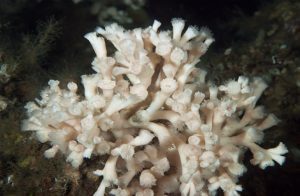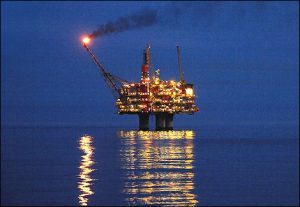
A trio of oil industry experts have written a “manifesto” to help de-cloud the offshore decommissioning landscape.
The three part series touches on a range of themes, including the validity of legislation around asset removal, decommissioning liabilities and the lack of a UK port strategy.
Decide Wisely director Jim Christie, DundeeCom chief executive Callum Falconer, and Jee chief executive Trevor Jee have collaborated on the project.
Read the first article:
Waiting on fish
Environmental Management and Ecosystem Protection
Overview
Oil and gas infrastructure is required to be fully removed from the North Sea to satisfy the base case in complying with UK regulator decommissioning guidelines, and the following conventions are often cited as the basis for this rationale:
- The OSPAR Convention; 1992¹
- The Basel Convention; 1989²
- The London Convention; 1972³
Many commentators are now suggesting that a much less prescriptive solution should be sought in the UK, and are advocating that we should “do the right thing’. Defining the “right thing” may not be simple and should consider, perhaps through robust comparative assessment, several factors including safety, environmental, economic and societal impacts. This is likely to result in the solution being different when removal options are considered on a case by case basis.
This raises at least three questions that we should consider, if we are going to pursue the “do the Right Thing” solution;
- Do the conventions actually require the complete removal of oil and gas installations?
- Does complete removal achieve the aims of the conventions?
- Does a single solution best answer the variety of situations and considerations?
Waiting on Fish
A North Sea operator recently undertook a programme to capture video footage of the current state, condition and surroundings of a subsea wellhead protection structure. This was carried out as part of the preparation of a Decommissioning Programme for submission to the UK regulators.

The sea conditions in the UK North Sea are known to be challenging and the concept of work having to stop and “wait on weather” is well known to industry stakeholders. This operator’s experience was a little different and a little unexpected; in trying to obtain good quality video footage of the structure and its surroundings, the operations were constantly interrupted and often impossible, due to the high volume of fish around the structures. The operator spent more time “waiting on fish” to disperse than it did dealing with adverse weather.
Law of unintended consequences
We have all probably heard of the law of unintended consequences, an idea dating back and often attributed to John Locke in the 1600’s and Adam Smith in the 1700’s. Unintended consequences can be defined as outcomes not foreseen or planned by the undertaking of purposeful action or actions. These outcomes are often negative, but they can equally by positive. This latter outcome is sometimes called serendipity or simply “luck”.
Clearly the experience above is an example of a significant positive unintended consequence in the North Sea through the introduction of oil and gas structures, which have now become hard substrate, providing an opportunity for the development and sustainability of offshore marine habitats.
A Thriving Marine Ecosystem
A growing number of academics, marine biologists, ecosystem scientists, and concerned members of the public believe we now have a thriving ecosystem in the North Sea, resulting from the introduction of man-made structures. This belief is not restricted to the North Sea and similar thoughts are being discussed, or emerging across the globe.

A question we should be asking ourselves is are we “doing the right thing” by removing these structures and destroying an established and growing marine habitat? Are the current regulations pushing us towards the wrong answer, or are they supportive and being incorrectly interpreted?
We undoubtedly have more data, experience and knowledge regarding the impact of man-made structures on the North Sea than we did when the regulations, guidance and interpretations were introduced and first applied. Is it time to re-visit our decisions and validate, or improve what we feel is the “right thing”?
The Conventions
The OSPAR Convention 1992
The mission of OSPAR is “to conserve marine ecosystems and safeguard human health in the North East Atlantic by preventing and eliminating pollution, protecting the environment from the adverse effects of human activities and by contributing to the sustainable use of the seas.” ¹
The relevant portion of the OSPAR convention which is considered by many to make complete removal of structures a requirement is Decision 98/3, made during the Ministerial Meeting of the OSPAR Commission in Sintra, Portugal in July 1998.
This decision states, in Paragraph 2, that “The dumping, and the leaving wholly or partly in place, of disused offshore installations within the maritime area is prohibited.”
It also states, however, that in the assessment for leaving installations in place, these should consider, inter alia “impacts on the marine environment, including exposure of biota to contaminants associated with the installation, other biological impacts arising from physical effects, conflicts with the conservation of species, with the protection of their habitats, or with mariculture, and interference with other legitimate uses of the sea”.
Some may consider the removal of structures, which then results in the destruction of marine ecosystems, to be in direct conflict with the over-arching OSPAR mission, or perhaps a possible contradiction within the Convention requiring consideration and clarification.
The Basel Convention 1989
The Basel Convention is focused on the control of transboundary movements of hazardous wastes and defines “dumping” as “deliberate disposal of hazardous wastes”.
The retention and protection of marine habitats and ecosystems does not involve transboundary movement, nor, one might argue, does a non-producing, clean structure constitute hazardous waste.
The London Convention 1972
The London Convention on Dumping defines dumping as, inter alia, “any abandonment or toppling at site of platforms or other man-made structures at sea, for the sole purpose of deliberate disposal”. It goes on to say that dumping does not include “placement of matter for a purpose other than mere disposal”.
Is the retention and protection of marine habitats and ecosystems an example of a legitimate purpose rather than mere disposal?
A Possible Path Forward
This article is not proposing that the current regulations, guidance, or their interpretations are wrong, nor is it proposing that a radical change in the regulatory environment is necessary.
What is being proposed, however, is that it is time to re-visit what is in place. The current regulatory stance seems to start with a preferred solution (“clear sea bed”), rather than a well framed question (“What is the best decommissioning solution for this installation, including environmental and ecological considerations?”)
A robustness of process to determine the best answer for an individual structure, type of facility, or area would be preferable to a prescription of outcome for all structures. This process of comparison must commence with the correct question and needs to be fair, balanced and holistic, taking into account different stakeholders and values. Any other approach is likely to produce a painful costly route to the wrong outcome.

Several of these processes exist today and have been used over a number of years to assist in quality decision making. It is always preferable, but quite rare, to define what the true problem is, before firmly landing on the answer.
If we wish to “do the right thing”, why not apply the correct process, then ensure we do the thing right.
References
¹ The OSPAR Convention. OSPAR Convention Homepage
² The Basel Convention. Basel Convention
³ The London Convention. London Convention
Recommended for you
